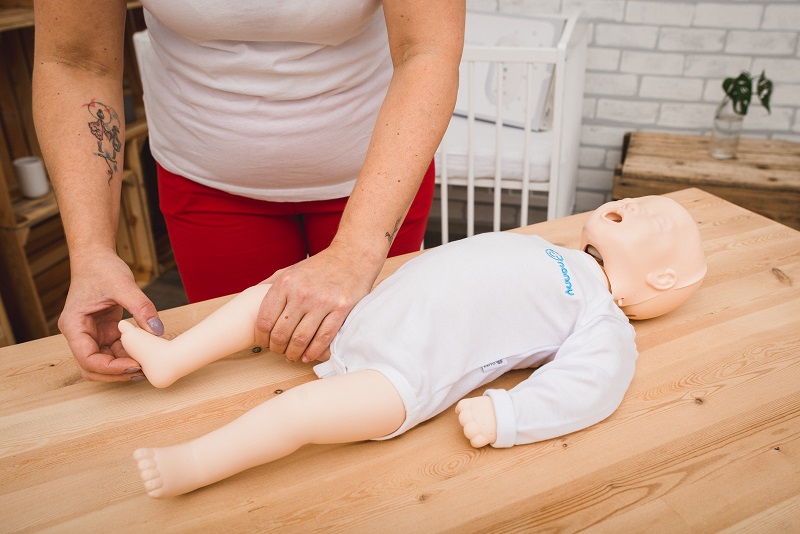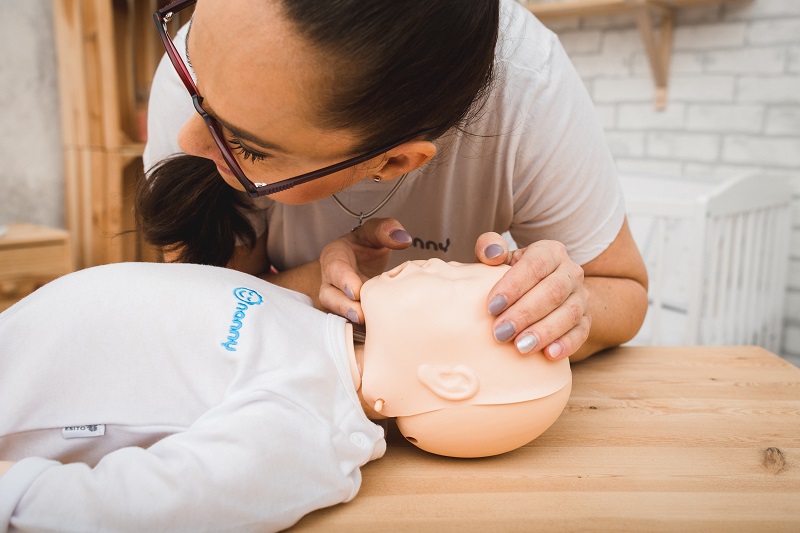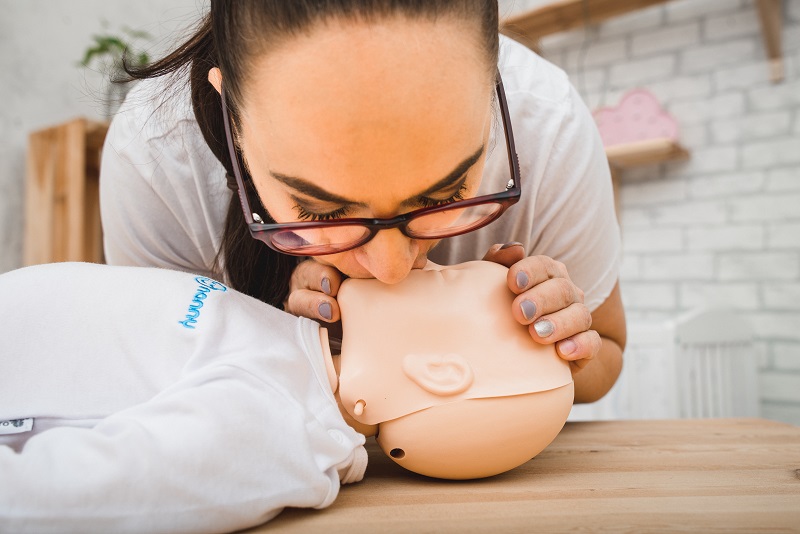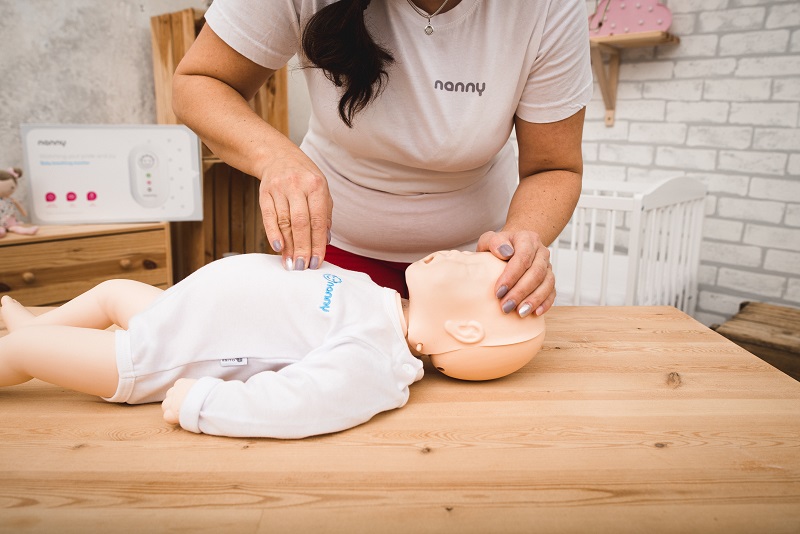Despite your best efforts, a baby may stop breathing for a variety of reasons, for example if the airway becomes blocked or if the baby vomits in the supine position. The danger of breathing stops increases with viral illnesses, fevers, convulsions and obstructive bronchitis. Greater vigilance is also in order for children with perinatal risks, premature babies and individuals suffering from sleep apnoea. If Nanny triggers an alarm, follow the instructions below.
Check the state of consciousness
- Address the baby loudly.
- If he/she is not responding, scratch or pat the sole of their foot.
- You can also rub the baby’s back with the palm of your hand.
- If the baby does not respond to any of these stimuli, he/she is unconscious.
- If another person is present, ask them to call the national emergency number (999 in the UK) or the European emergency number 112. In the meantime, begin resuscitation according to the following instructions.
- If you are alone, begin resuscitation immediately. If the baby is not breathing even after 60 seconds, call an ambulance and then resume resuscitation.

Take the baby out of the cot and lay him on a flat surface. If the baby had remained in the cot, any indirect cardiac massage would have had no effect, as the baby would only have been pushed into the mattress.
Free airways
Adjust the baby's head to a neutral position. If the child is over 1 year old, tilt the head and remove visible obstructions in the airway. However, never search the mouth blindly!

Ensure breathing
- Listen or see if the baby has started to breathe.
- If not, begin mouth-to-mouth resuscitation.
- With one hand on the baby’s forehead and the other on its chin maintain a slight backward inclination of the baby’s head. Cover the baby’s lips and nose with your mouth.
- Perform five artificial breaths.
- You can recognise this by the baby's chest rising when breathing in and falling as it breathes out.
- The chest should move about the same as if the baby was breathing spontaneously. Therefore, be careful that you do not breathe too little (the chest does not move) or too much (never breathe against stronger resistance).

Ensure blood circulation
- If the newborn is not breathing naturally and is not moving even after 5 artificial breaths, start indirect heart massage.
- Place the end of your index finger and middle finger approx. 1.5 cm below the connecting line of the nipples (end of the sternum).
- Compress the chest by approx. 2-3 cm (approx. 1/3 of its sagittal diameter) 15 times.
- Compress at a frequency of approximately 2 squeezes per second (to the rhythm of the songs 'Jingle Bells' or 'Stacy's Alive' by the Bee Gees).
- Repeat for 2 breaths. Inhale air into the child's mouth only until the chest rises. Then repeat the procedure several times, keeping the same order, i.e. 15 chest compressions and 2 breaths.
- Continue resuscitation until the ambulance arrives or until your complete exhaustion.

 After 1 minute, call the emergency if the other rescuer has not already done so.
After 1 minute, call the emergency if the other rescuer has not already done so.
After dialling 112/999, put the phone on speakerphone and place it next to the child's head. Keep calm and don't waste time. When dialling the phone, keep repeating the first aid procedure in the same order, i.e. 15 chest compressions and 2 breaths. Then follow the instructions of the emergency operator.

